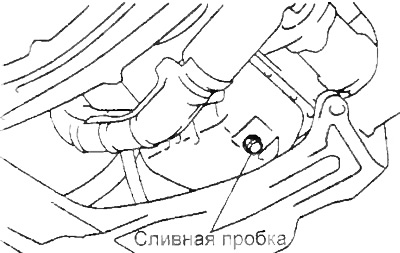Oil Handling Precautions
1. Prolonged and repeated contact with engine oil causes the natural fat layer to be removed from the skin and results in dryness, irritation and dermatitis. In addition, the motor oils used contain potentially hazardous ingredients that can cause skin cancer.
2. Wash hands thoroughly with soap or other cleaning agent after handling oil.
3. Do not use gasoline, kerosene, diesel fuel or thinner to clean the leather.
Checking the engine oil level
1. Park the vehicle on a level, level surface. After turning off the engine, wait a few minutes for the oil to drain into the crankcase.
2. Remove the oil dipstick and wipe it with a cloth.
3. Reinstall the dipstick until it stops.
4. Remove the dipstick and check the oil level in the crankcase
If the oil level is below or slightly above the low mark on the dipstick, add the same type of engine oil that was filled into the engine.

5. Add oil if necessary.
- A) Remove the oil filler cap.
- b) Add the required amount of engine oil. The approximate amount of oil required to fill the volume between the low and high marks on the dipstick is 1.0 liters.
Note.
- Avoid overfilling oil, otherwise the engine may be damaged.
- Always check the oil level on the dipstick after adding oil.
- V) Install the oil filler cap.
Engine oil selection
1. Use API grade oil (for petrol engines -SH, SJ), (for diesel engines -CE, CF).
2. Viscosity (SAE) select according to the temperature range chart corresponding to the operating conditions of the car until the next oil change.

Engine oil change
1. Park the vehicle on a level, level surface.
2. Warm up the engine for a few minutes to normal operating temperature, then turn off the engine.
3. Remove the engine oil filler cap.
4. Unscrew the drain plug on the oil pan and drain the oil into a suitable container.

3S-FE, 4S-FE
5. Install a new gasket and tighten the drain plug.
- Tightening torque - 37 Nm
6. Fill in new oil in the engine.
Note: see the type and recommended oil viscosity in the subsection "Engine oil selection".
Filling capacity:
3S-FE, 4S-FE:
with filter replacement - 3.9 l
dry engine:
- without oil cooler - 4.3 l
- with oil cooler - 4.4 l
ZS-T:
- with filter replacement - 5.1 l
- dry engine - 5.8 l
7. Replace the oil filler cap.
8. Check the oil level and make sure there are no leaks.
9. Check the oil level and make sure there are no leaks with the engine running.
Oil filter replacement
Attention: when operating in severe conditions, replace every 5000 km (or 6 months.).
1. Using a special wrench, loosen the oil filter (rotate counterclockwise).

2. Unscrew the filter by hand and remove it, holding the working side up so as not to spill oil.
3. Clean the mating surface on the cylinder block. Make sure there is no gasket residue from the old filter.

4. Apply some engine oil to the new filter gasket.
5. Screw the filter onto the seat by hand until the gasket contacts the welded surface of the cylinder block.
6. Using a special wrench, tighten the filter an additional 3/4 turn.

